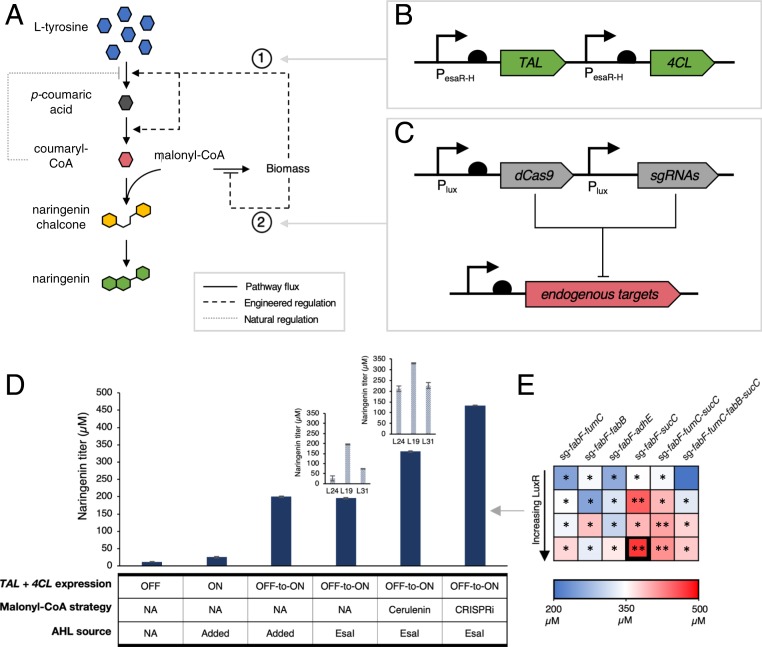Fig. 3.
Dual regulation in the naringenin pathway. (A) Schematic of the regulatory strategy. Increasing cell density triggers 2 dynamic gene expression switches, one that up-regulates TAL and 4CL expression and a second that down-regulates expression of endogenous genes that are associated with malonyl-CoA accumulation. Dotted lines represent QS circuit responses and solid lines represent metabolic reaction fluxes. (B) Diagram of the TAL and 4CL up-regulation module responsible for actuating the engineered response labeled 1. TAL and 4CL are each under their own PesaR-H promoters. In the presence of constitutive EsaR and EsaI, expression from the PesaR-H promoter turns ON with increasing cell density. (C) Diagram of down-regulation module responsive for actuating the engineered response labeled 2. dCas9 and each sgRNA are expressed from their own Plux promoters. In the presence of constitutive LuxR and EsaI, expression of the target genes turns OFF with increasing cell density. (D) Naringenin titers with different regulatory schemes. Naringenin titers increase 6-fold over static strategies when TAL and 4CL expression are induced autonomously or with the addition of exogenous AHL. Cerulenin treatment improves naringenin titers in all esaI backgrounds and addition of the CRISPRi-mediated down-regulation module results in naringenin titers that are 40% higher than the top cerulenin-treated strain. (E) Heat map indicating naringenin titers with varying LuxR levels and down-regulation target genes. The square corresponding to the top producer is bolded. *P < 0.01 compared to TAL and 4CL controlled strain in L19 background. **P < 0.05 compared to TAL and 4CL controlled strain in L19 background with cerulenin. Error bars indicate SD of triplicate trials.

